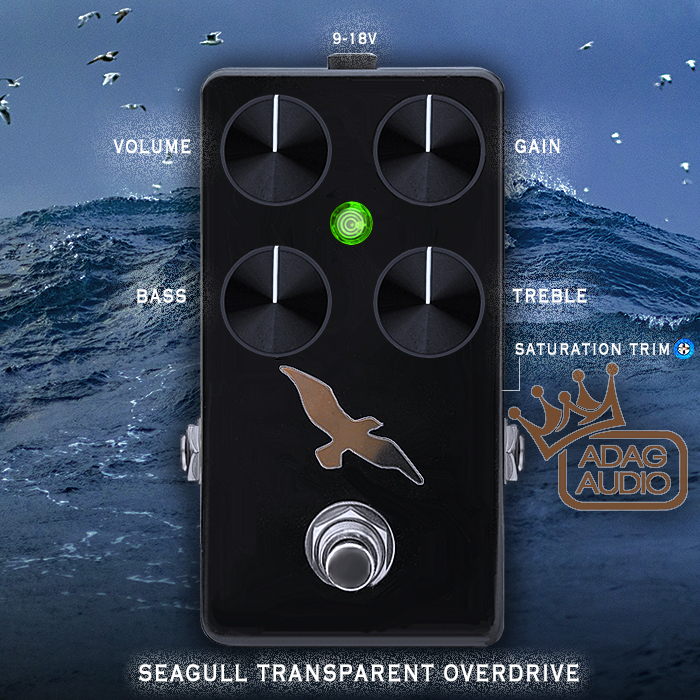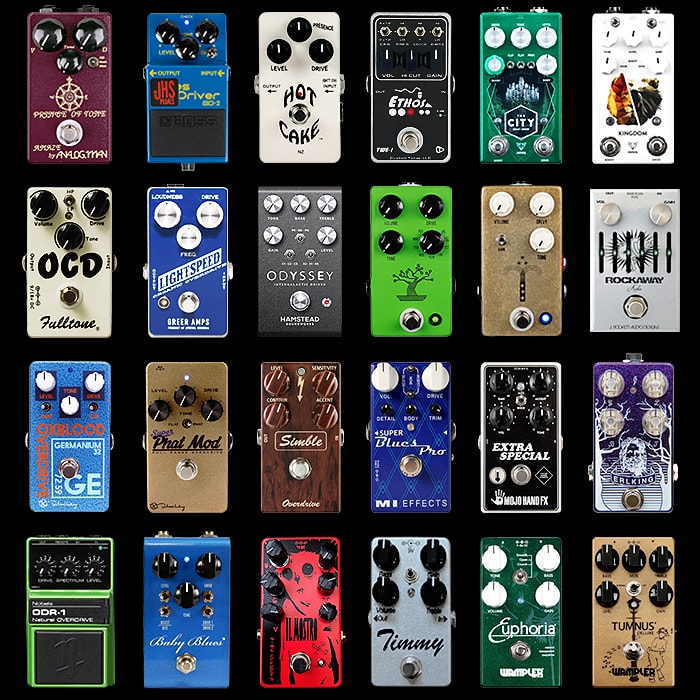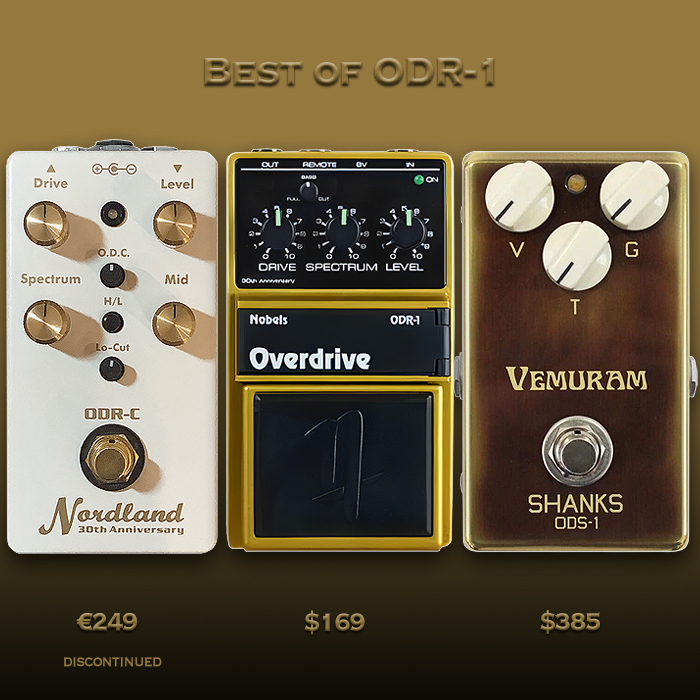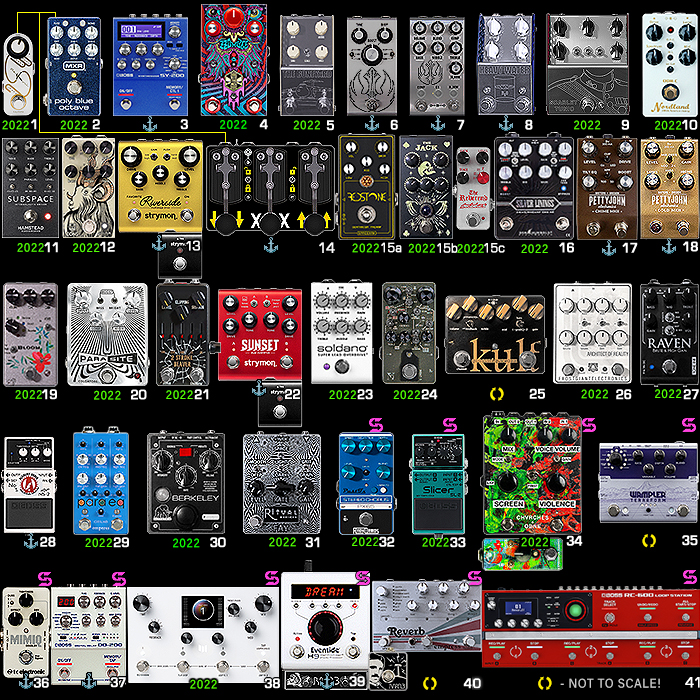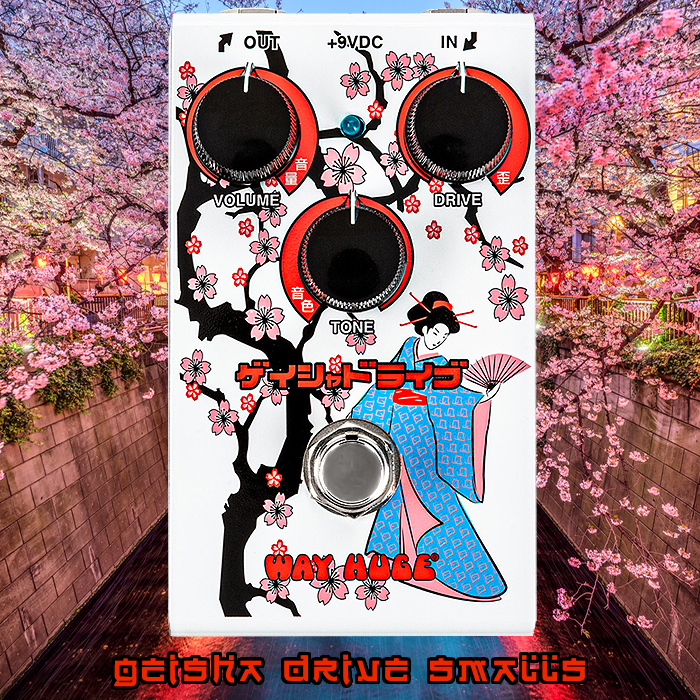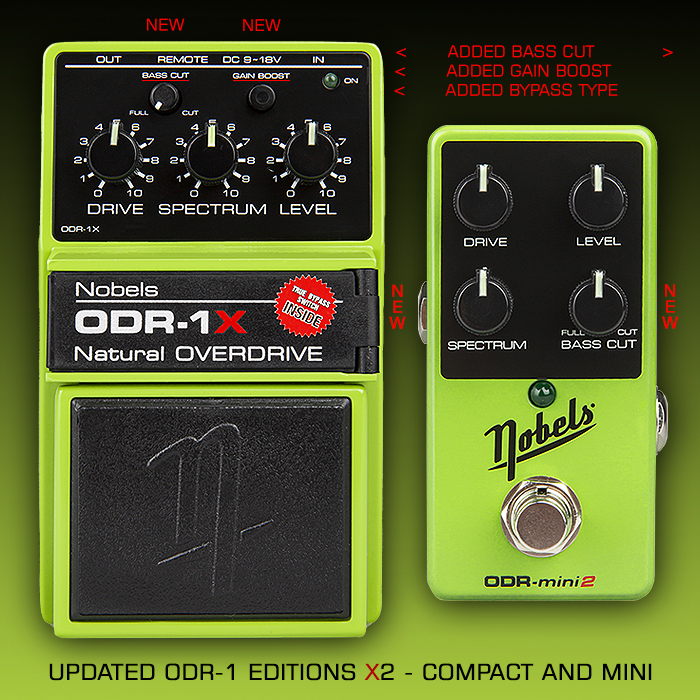Kai Tachibana's Nordland Electronics revives and evolves his 1993 Nobels ODR-S as the Nordland ODR-CS Custom Special
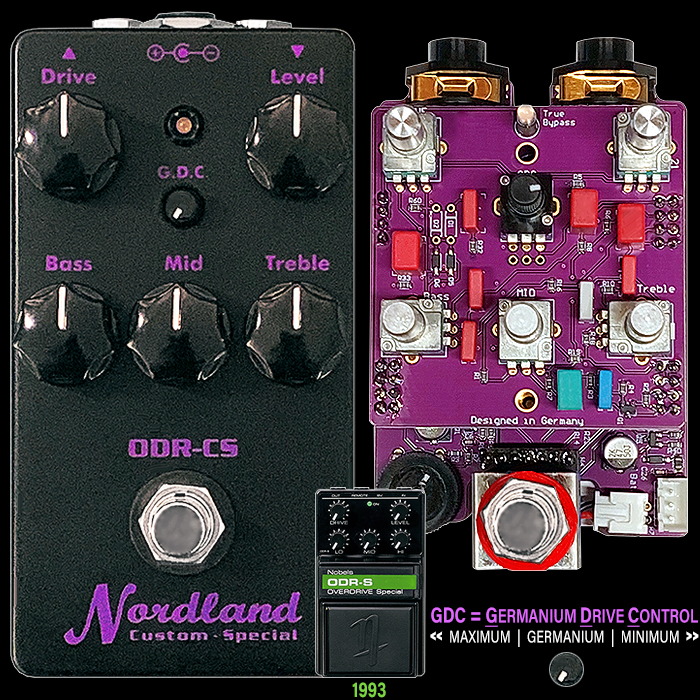
The innovation with the original 1993 Nobels ODR-S was that the unique Spectrum Tone Stack of the ODR-1 was swapped out for a more granular 3-Band EQ. In that version the Bass and Treble controls were active, while the Mid control was a range sweep. For the ODR-CS the Mid band is Active now too - which means you can cut as well as boost each of the frequency bands.
The most obvious visual difference for the ODR-CS is the G.D.C. mini knob - which stands for Germanium Drive Control. The core circuit is a Soft-Clipping Silicon variety - with some significant smoothness to it, while you can now progressively dial in more Germanium Grit, Bite and Harmonics - interestingly the control is More Germanium to the left, and less to the right. So fully CW you’re just hearing the core Silicon based circuit. I personally love superior harmonics which is exactly what the G.D.C. knob brings - meaning I have that mostly dialled at CCW which is actually Max Germanium impact.
I recommend you try the G.D.C. control at either extreme first and then the middle - to see what your likely preference is - of course this is all just part of an extended tonal palette and you must adjust to fit the character of whatever music you are playing.
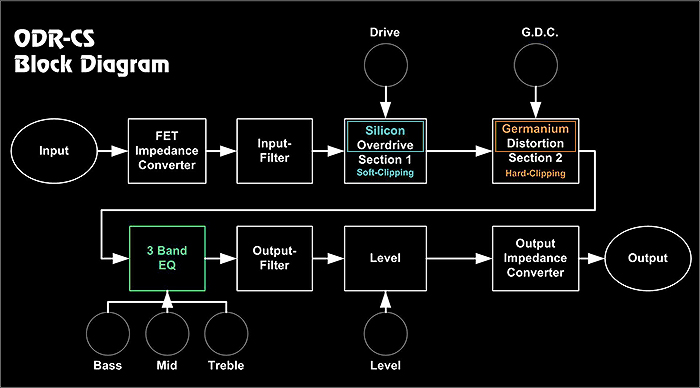
Compared to the core ODR-C and the ODR-C 30A this ODR-CS has a touch more bite and gain overall - which makes it more versatile in some ways - and gives you some fairly significant gain when maxed . I would say the two ODR-C editions are ideal for lower gain applications and the ODR-CS for somewhat higher gain - while there is a fair amount of overlap too. The ODR-CS definitely has a touch more zing to it - and I'm of course recommending both! Note that overall these pedals still operate mostly within the low-gain to mid gain spectrum.
My own Favourite Settings are - Drive @ 9 o'c, G.D.C. at fully CCW, Level @ 3 o'c, Bass @ 9 o'c, Mid @ noon, Treble @ 3 o'c.
This is a highly dynamic overdrive with decent guitar volume gain roll-off - so you can shape your output gain to a fair degree using your guitar volume knob. The Gain / Drive dial has a beautifully even taper - starting as a sort of clean-ish boost when fully CCW and with breakup onset pretty quick - and fairly noticeable by 9 o'c.
Each of the ODR-C and ODR-CS are subtly different at core levels - while the ODR-CS Germanium voicing moves this pedal distinctly on from its siblings. I always say it's about the musicality of the situation or the piece you are playing as to which variety of overdrive best suits the occasion. The ODR-C 30A and ODR-CS are two of my very favourite Overdrives - both super versatile and each really special in its own way - both have gorgeous character.
In some ways the ODR-CS is more straight forward to dial in as its controls are slightly more traditional - while the ODR-C / 30A has its own advantages and strengths.
The engineering of these pedals is next level and Kai breaks this pedal down in the finest of details on his Nordland Electronics Website - detailing every technical aspect of the circuit and output you need to know. The ODR-CS Custom Special is of course available once more for €200 on the Nordland Electronics Webstore and should coincide with this article going live - while you need to move very quickly as these get snapped up almost instantly.
Here is what Kai improved over the original 1993 ODR-S :
- Conversion to true bypass operation
- Best Components:
- 1% metal film resistors
- Maximum 5% film capacitors (Wima, Epcos, Kemet) in the signal path
- Solid 6.3mm gold plated cliff sockets (UK)
- Gold-plated PCB plugs / sockets
- High quality, screwed large potentiometers
- Special foot switch with an extra light pressure point
- Small G.D.C. potentiometer (Germanium Drive Control)
- Improved Bass and Treble controls
- Extended middle adjustment range (previously only +mids, now +/-mids)
- Adjustable LED brightness (internal)
- Smaller, stable and closed aluminum housing from Hammond Mfg./UK (perfect shielding against hum and EMC)
- Massive design improvements such as screwed boards with double gold-plated contacts between the main and controller boards
- At the input is the capacitor-free JFET input stage, which converts the sensitive high-impedance signal into a low-impedance one
- A small filter stage follows, which feeds the signal into the overdrive stage
- The overdrive stage runs with silicon diodes - a classic overdrive principle. The strength of the overdrive can be adjusted with the Drive control
- Like the ODR-C, the ODR-CS has a soft-clipping overdrive stage, followed by a hard-clipping (distortion) stage. In contrast to the ODR-C, the ODR-CS uses germanium diodes instead of silicon diodes. Germanium diodes have a different - more flatter characteristic - and sound correspondingly different. The germanium diodes limit the signal and add many harmonics. This was done with the G.D.C. Controller (Germanium Drive Control) made adjustable so that the proportion of harmonics can be reduced. This is particularly well suited for low gain operation
- The following is the 3-band equalization (EQ):
- In contrast to the 1993 version, Kai slightly revised the bass and treble controls.
- The mid control, which previously could only add mids, can now also subtract mids. That expands the function!
- Near the end you have the output filter to adjust the sound also
- The volume control comes next, and finally followed by the -
- Output impedance converter
You have the choice of 9 to 18 volt operation. Other tones are possible by operating with voltages between 9 V and 18 V.
Difficult to explain: Just try it! The feel of the gain changes. You have several highly impactful controls here and the process is really to experiment and find your favourite flavours and textures. All the dials have even and predictable tapers and are really easy to dial in to your preferences!
I still feel Nordland Electronics is slightly under the radar for many - and I'm working to get this brand the recognition it deserves - I feel very privileged to own three of these pedals - all are special to me - the original ODR-C, the ODR-C 30th Anniversary edition, and this ODR-CS Custom Special. The ODR-C and ODR-CS are distinctly different and you really need both!
Just to recap that there are even more technical details on the Nordland Electronics Website, and you can order you ODR-CS direct from the Store for €200 plus shipping.
Technical Data

- Input Impedance ~1 MΩ
- Output Impedance ~1 kΩ
- Power supply with DC 9 V battery:
- Dry battery 6F22 (9 V)-Type (Carbon)
- Dry battery 6LR61 (9 V)-Type (Alkali-Manganese)
- Battery life during continuous operation*):
- Carbon: 20 hours (calculated with a battery capacity of 300mAh)
- Alkaline manganese: 33 hours (calculated with a battery capacity of 500mAh)
*) This information depends on the battery and the ambient conditions!
- DC power supply 9 V to 18 V (electronically stabilized)
- Power consumption: approx. 15 mA at 9 V, approx. 25 mA at 18 V
- Dimensions 125 (L) x 66 (W) x 58 (H) mm
- Weight ca. 360 g (without Battery)
Demos









